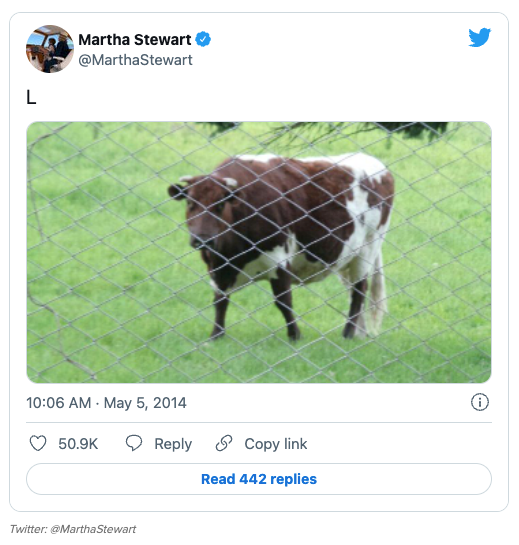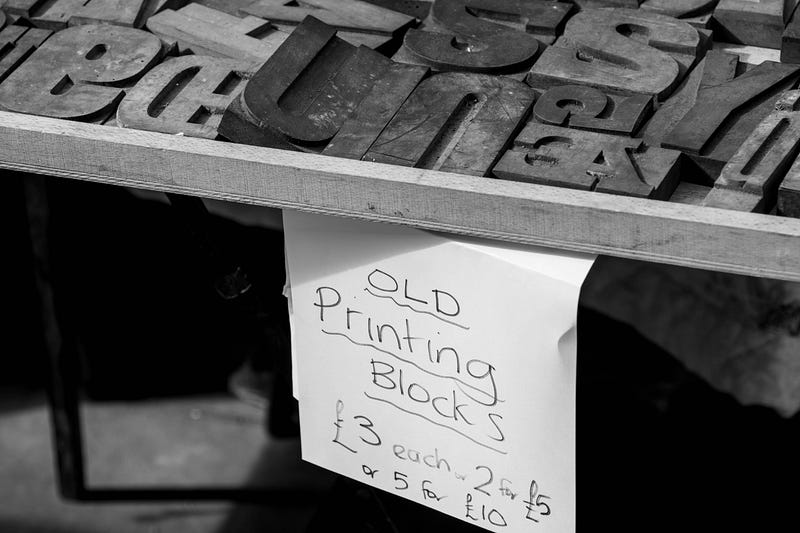Koláče vs Klobásníky vs Bierocks vs Runzas vs Pirožkí vs Pierogi vs Pączki vs Makowiec

Recently, one of my favorite web series to watch is "
Really Dough?". The series follows Scott Wiener, a self-proclaimed pizza enthusiast who gives pizza tours across New York, trying to expose traditionalist pizzaiolo Mark Iacono, owner of New York pizzeria Lucali, to new and interesting "pizza" styled items. They go through ramen pizza, gold-covered pizza, pizza bagels, grilled pizza, etc. to try and come up with a real definition of what pizza really "is". Much of the series is Mark telling Scott "That's not pizza" but when it comes to calzones... he is MUCH more flexible.
Comfort food is so incredibly personal. With more immigrants from Central and Eastern Europe and a greater interest, at large, of cultural foods, it is easier than ever to confuse many of these items with each other.
What I respect about the show "Really Dough?" is that they showcase all these restaurants and praise the taste and quality of their food, but in the same breath can say "This is not pizza". I respect that. I love that Shipley Donuts, Buc-ees, and Texas at large sell "Kolaches". I have to control my expectations because I know that when I see them on a menu, the odds are that I will not get a traditional koláč like the ones I grew up with.
DISCLAIMER:
RANT FOLLOWS----
As any self-respecting human being, Texas occasionally offends me. Don't get me wrong, I have a great deal of respect for a lot of Texans. They are a mecca for BBQ and they have kept key pieces of Czech culture alive. That being said, the Klobásníky vs Koláče vs "Texas Kolaches" debate always rankles me a bit. I am not the first, nor will I be the last, person of Czech-American heritage to point out the difference between the pastry, a kolach, and the pigs-in-a-blanket item, properly called a klobasnek, that Texans insist are kolaches. To be completely honest, I don't get frustrated with the normal Tom, Dick, or Harry that don't understand the difference, it can be incredibly niche. I get frustrated when people who know better continue to use the wrong term because they like to get a rise out of people. If you want to borrow from someone else's culture, at least have the common courtesy to represent it appropriately.
---- RANT OVER
With that rant over and sorted, the reality is that the various Slavic cultures (predominantly Russia, Ukraine, Poland, Czech Republic, Slovakia, Bulgaria, Serbia, Croatia, Slovenia, Bosnia and Herzegovina, Montenegro, North Macedonia, Belarus, Lithuania, Latvia, and even Hungary to an extent, although Hungarian is really more developed from the Finno-Ugric language family, they count) have similar food items, or at least food items that heavily influence each other particularly during the height of the Austro-Hungarian Empire. That being said, Slavs are proud of their heritage and really cling to the comfort foods of their youth.
Today's topic is on filled bread. I will caveat this by saying that I am Czech from Nebraska so my opinions are influenced by that life.
Apricot Koláče
Koláče
(Singular Koláč) English spelling is generally Kolach or Kolache. It is incorrect to refer to these in the plural as Kolaches, as that is not the way most of the Slavic languages make things plural. Originate in Czechia and Slovakia and it literally refers to a circle/wheel, or kolo. The dough is ever so slightly sweet, but not as sweet as a cinnamon roll dough, and usually enriched with eggs, but not as rich as a brioche. Many of my friends and family will just use frozen Rhodes dinner roll dough in a pinch.
My family's favorite filling is cream cheese. Traditionally this would not be made with cream cheese, but rather a really large dry curd cottage cheese. I really like poppy seed filling, which is just what it sounds like, enough poppies to make you fail a drug test thickened with sugar and lemon juice. Otherwise, I am always game for a cherry or apricot kolac.
Some groups will put a streusel (drobenka) topping on top, but my Grandma never did... so I don't either. I could be swayed, however, because they don't stick to each other as much when you add the topping. If you do need to add drobenka, keep it simple: 1 TB Soft Butter, 2 TB Sugar, 3 TB Flour.
A note on sizes. I like a slightly bigger kolace, so around 50g. Rhodes Rolls, if you know you know, that are often used as a substitute for fresh dough are closer to 39-40g. Lots of people do about an ounce and a half... or 42.5g.
Koláče Dough (adapted from Czech and Slovak Educational Center and Cultural Museum in Omaha, NE)
Ingredients
544.5 ml Milk
108 g Canola Oil
100 g Granulated Sugar
2 Large Eggs
21 g Instant or Active Yeast
5.7 g Salt
875+g All-Purpose Flour
Instructions
- Heat milk, oil, sugar, and salt until very warm (almost 170-180°F) and then allow to cool to BELOW 130°F.
- Beat in eggs and add yeast.
- Let sit for 5 minutes
- Add liquid mix to a stand mixer and add 1/2 to 3/4 cup of flour at a time until it starts to pull away from the bowl.
- Add more than the prescribed flour if not pulling away, but it should be sticky.
- Knead dough by hand or with a dough hook till stretchy and smooth (about 5 minutes on low)
- Allow dough to proof in a large, covered, greased bowl for 90 minutes or until doubled in size.
- It CAN be punched down and proofed one more time if you want, or it can be shaped and filled and allowed to rise.
This dough is pretty multi-use, but for koláče, I like to form balls that are about 50g a piece and then press the center down forming a disc-shaped pastry that can be filled with whatever you like, and baked for about 20 minutes at 350°F. For a shiny surface brush with egg wash (1 egg to 1 tbsp water)
Cream Cheese Filling
(will fill about 12 Koláče)
8 Ounce Cream Cheese
1 Egg Yolk
4 tbsp Sugar
1 tsp Vanilla
Mix together till smooth, and fill.
Larry D. Moore, CC BY 4.0, Wikimedia Commons
(Singular Klobásnek) This Czech word comes from the diminutive of Klobasa (yes it sounds like Kielbasa, they both mean sausage). So it refers to "Little Sausages". These are often more square-shaped. In the United States, these are often filled with a pre-cooked smoked sausage. The confusion comes in that they use the same dough as the koláče above. Some mistake this use of dough as meaning they are the same thing... the reality is that the dough used is just the most common generic dough used by Czechs for rolls and these sorts of baked goods. You can follow the recipe for koláče and just use 80g of dough per klobásnek and wrap the dough around a sausage, or other filling.

In the Czech-lands (Czechia or Czech Republic depending on who you are talking to) you will not find a klobásnek nearly as often as Párek v Rohlíku. Párek is the Czech word for hotdog and rohlíku means bread-roll. Rohlíky are ubiquitous in Czech communities and were on the table at every meal my Grandma served. The ones we ate were normally "horn-shaped" like a crescent, but they are certainly made straight for use with a hot dog. These are very similar to a Hungarian kifli.
Photo at Párek v rohlíku – Ladislav Červený by Luboš Lagin
Back to the meat of the matter. Párek v rohlíku can be made in two different ways. The most common is the street food version where a rohlik is simultaneously pierced and toasted with a heated spike, then toppings and a parek are placed into the roll. Very handy!
The other version, párek v rohlíku z trouby, is a baked version. The baked version takes the raw dough and wraps it around a sausage and they are baked. Sound familiar?
I have an almost sick fascination with the trny na párky, sausage spikes, that are used to pierce and toast the rolls, but I am afraid of what my children would do with it, or what the ER would say the first time we have an injury.
Starter:
120ml warm water
4g granulated sugar
3g / 1 tsp active dry yeast
130g all-purpose flour
Dough:
28g canola oil
14g salt
390g all-purpose flour
160ml warm water
Instructions
Starter:
1. Dissolve the sugar in lukewarm water.
2. Combine Yeast and Flour.
3. Slowly add wet and dry ingredients till well combined.
4. Leave it in a warm place to rise for 45 minutes.
Dough:
1. Combine remaining ingredients with starter and mix/knead till soft and elastic. It should be soft, but add flour as needed.
2. Allow to rise for about 1 hour till doubled.
3. Divide into two haves.
4. For each half, roll out to a flat circle, about 12 inches, and cut like a pizza into 4 parts.
5. Roll each triangle from the widest end to the tip.
6. Set on a baking tray tip side down.
7. Allow to rise for another 30 minutes till puffy.
8. Bake at 450°F for 10-13 minutes till golden brown.
TIPS:
- I grew up with these as crescent moons, but they can be straight to receive a hotdog, or long and thin as a pivní rohlík, beer roll.
- Brush with an egg wash to make them shinier, or top with poppyseed, sesame, etc. Or brush them with melted butter afterward... all delicious.
When you do find klobásníky in the Czech Republic, they are more often stuffed with a raw, uncased sausage and then cooked till the sausage is done and the outside is golden brown, not completely dissimilar to a British Sausage Roll, albeit not as flaky of a crust. Whether they originated in Moravia, are a version of párek v rohlíku z trouby, or were a Czech-American invention in 1953 by "Village Bakery" co-owner Wendel Montgomery in West, Texas they are certainly delicious!
My stipulation with calling something a klobásnek is that it does contain sausage... because it is in the name. I love sausage, egg, and cheese klobásníky. If it has brisket or something like that, it is still amazing, but it is a slightly different item. That being said, I would rather see a brisket-filled bierock/pirožkí called a klobásnek than see the bastardized term "Texas-Kolaches".
Klobásníky Filling
Ingredients
1000 g Pork (preferably on the fatty side)
17.5 g Kosher Salt
4 g Black Pepper
2.2 g Granulated Garlic
4 g Garlic Cloves
1.5 g Marjoram
30 g Potato Starch
2 Egg Whites
100 g Breadcrumbs
50 ml Water
Instructions
- Cube pork to fit through the grinder
- Combine with Salt, Pepper, both kinds of Garlic, Marjoram, and Potato Starch
- Place in fridge for several hours
- Run the mixture through a coarse plate on the grinder
- Mix with Egg Whites, Breadcrumbs, and Water until a good bind forms (should stick a gloved hand)
- Form into 2-3" logs and wrap with dough
- Bake at 350°F until probe reads 165°F
Traditional Bierock with Beef, Cabbage, and Onions
Bierocks vs Runzas vs Pirožkí
Much as Kleenex has become a generic term for facial tissues, Runzas, in Nebraska, are a generic term for these loose-meat-filled bread rolls. Elsewhere in the midwest, they will most often be referred to as Bierocks.
Bierocks are a derivative by Volga German immigrants of their homelands pirožkí. Volga Germans, while ethnically German settled east of Ukraine and latter in Russia proper. When they fled persecution they brought pirozhki or pirog with them, pirog = birog = bierock.
A Runza with Cheese (
Runza)
Sarah "Sally" Everett (née Brening), originally of Sutton, is credited with adapting her family's bierock recipe into the runza and also inventing the name for the sandwich. In 1949, Everett went into business selling runzas with her brother Alex in Lincoln (NE). - Wikipedia
Much like the klobásníky above, they are yeast dough stuffed with a delicious filling. While you could probably use a klobásníky dough and fill it with a filling more traditional to bierocks, I have always thought of bierock as having a slightly leaner, less rich, dough.
As far as the differences between Bierocks vs Runzas vs Pirožkí much is in the shape. The way my mother, and many of the Germans I worked with in Kansas make them, bierocks are round. Runzas are more of an oblong or rectangular shape. Pirožkí are more boat-shaped and may have the seam on the top, crimped like a pie (interestingly pirog is the Russian word for pie) instead of hidden on the bottom like the others. Pirožkí may also be made fried instead of baked.
Growing up, the filling for bierocks or runzas was a mixture of ground beef cooked with shredded cabbage and onions. As more Russians immigrated in the last 50-60 years, we have certainly gotten a broader range of fillings at places that serve pirozhki.
Traditional Midwestern Bierrock
(This is my Mom's Recipe, Scaled up for our family of 9)
makes about 2 dozen Bierocks
Dough
Ingredients
21g yeast
720g water
72g sugar
17g salt
84g oil
1080g AP flour
Instructions
- For dough, dissolve yeast in water in a large mixing bowl. Allow to sit for 3 to 5 minutes.
- Stir in sugar, salt, oil, and enough flour until the dough comes together in a ball.
- Knead dough for 6 to 8 minutes or until smooth and elastic.
- Let dough rest, covered, for 30 minutes.
- Punch down dough. Cover; let rest for 10 minutes.
- Grease a baking sheet with shortening.
- Portion out 80g balls
- Roll out each ball into a circle, fatter in the center than the edges.
- Place ½-⅓ cup filling (#8 Portion Scoop) in the center of each circle.
- Pick up the sides of each circle and pinch them together.
- Pinch each diagonal seams so the roll is sealed well.
- Turn each bierock seam-side down onto a greased baking sheet.
- Bake in a preheated 400° F oven for 15 to 18 minutes.
- Serve warm or freeze and reheat.
(Microwave from frozen for ~1.30 on high, wrap in a towel for first 1.15)
Traditional Bierrock Filling:
Ingredients
2268g Ground Beef (~5lbs)
1-2 Onions Chopped
567-700g Shredded Cabbage
Salt and Pepper to taste
Instructions
- Prepare filling by browning ground beef, then thoroughly drain.
- Add remaining ingredients.
- Cook on low, covered, until vegetables are tender or disappear altogether. Season to taste.
- Drain, and cool slightly.
.jpg)
Pierogi and Kielbasa
Pierogi
(Singular Pieróg, there are no such things as "pierogis") Of all the stuffed Slavic food in this post, I think pierogi are the most recognizable, and the most likely for someone to have tried. Despite having a similar root to pirožkí these Polish delicacies have very little in common with the previous food mentioned. Instead of a yeasted baked dough, pierogi are made with a sour cream or lard-enriched "pasta" style of dough. They are filled with meat, potato, fruit, etc., and are then cooked by boiling them. They can then optionally be, as I prefer them, pan-fried.
SUPER sized pierogi from
Stoysich in Omaha, NE
There is a question as to whether these came from Chinese Dumpling and Italian Ravioli lineage, and whether or not this is the case, I will argue that the fillings are what make them unique. They are much more filling and stout than either of those other stuffed pastas. Personally, my favorite are the pierogi filled with potato and cheese... and maybe some bacon for good measure.
Pączki
(Singular pączek) If klobásníky are Czech yeasted dough baked with savory sausage, pączki are their sweet, rich, fried cousins from the north. These Polish donuts, made with a very rich dough of eggs, fats, sugar, yeast, spirits, and sometimes milk, are traditionally eaten right before the Lenten fast begins. Since the strict abstinence fast of Great Lent includes abstaining from all meat and meat products, eggs, dairy, oil, and wine, many of those are "used up" in the making of pączki.
While I certainly wish more bakeries would embrace the idea of pączki before lent, instead of just making king cakes. I would say the biggest difference between a jelly donut, a Long John, or a Bizmark is in the dough. As I think about it, we have a local bakery that does brioche buns for their breakfast and lunch sandwiches but bills themselves primarily as a donut shop. I do wonder how much I would have to plea to get them to make a proper pączki... it is not far from a brioche dough, just richer.
For those from the East Coast who have experience with fastnachts, these are certainly a similar idea. They are both traditionally served on Fat Tuesday (the day before Lent starts in the West) but fastnachts are more German, made with potato dough, and usually more square or triangular shaped. Czechs will call pączki, koblihy but they are almost indistinguishable from their Polish cousins.
The Nut Roll
I feel like, of any of these, this is the most self-explanatory. Nut Rolls are ubiquitous across central and eastern Europe. The reason they are included in this list is because some cultures refer to them as Kolac/Kolach. As we learned earlier, the root of the word is kolo, which means wheel or circle. In my mind, even though this is not the way Czechs use the term, it is an appropriate term to use for this loaf of bread... it is rolled up. One of the best ones I have had was served at a food festival by the Russian Orthodox Parish just north of town, and that one had an almond filling. I will be the first to say that almond filling is not traditional. Not only are walnut and poppyseed the most common fillings, but some even call the end product completely different names. Orechovník is made with walnut, but Makovník is made with poppyseed.
In Summary
Koláče: Czech - root word of kolo means "wheel" - flat and round sweet-filled pastry.
Klobásníky: Czech/Czech American - root word means "little sausage" - enclosed yeast dough with sausage inside. Cousin/Fraternal Twin of párek v rohlíku z trouby.
Pirožkí: Pirozhki (Russian), Piroski (Greek), Speķrauši (Latvia) - root word from "pie" - boat-shaped yeast dough filled with sweet or savory fillings.
Bierocks: Volga German variation of Pirožkí, brought to the USA by immigrants. Generally round or sometimes square shaped. Predominantly filled with a Beef/Onion/Cabbage mixture.
Runzas: Nebraska brand name/resteraunt variation of the Volga German Bierrock. Usually rectangular like you find in their restaurants.
Pierogi: Polish, Varenyky (Ukraine), Derelye (Hungary) - Various fillings, but frequently savory, in an unleavened dough cooked in boiling water and sometimes fried.
Pączki: Polish - Root word pąk means "bud" - rich yeasted donut filled with jam and cream, often eaten before Lent.
Nut Roll: Orechovník (walnut filling), Makovník (poppyseed filling), Povitica (Croatia/Slovenia), Bejgli (Hungary), Kolach (various wheel/rolled) - Yeasted dough, rolled flat, spread with filling, rolled, and baked as a loaf.
How upset are we all when we purposefully get called by the wrong name, or someone gives us a nickname we don't care for? I feel like no one would call an open-face sandwich a pizza long after they were corrected by the Italian population at large; likewise, these Slavic dishes deserve to be called by the correct name. It is certainly understandable that recipes change as people emigrate away from their homeland, and it makes sense that fillings change somewhat depending on the area they settle in. Certainly, klobásníky, bierocks, and Runzas are a direct result of immigrants trying to share their cultural food. While people obstinately calling the food of my culture by the wrong name irks me, I was, ultimately, motivated to write this post after my oldest daughter asked me why we call beef/cabbage/onion stuffed rolls "bierock" but call sausage/egg/cheese stuffed rolls "klobásníky".
- Koláče are sweet round pastries. They can be the size of your face as in some Moravian towns, or slightly smaller than a cheese danish.
- When I stick meat that is not sausage into yeasted bread, I call it a bierock, even if I use the same dough I would use for the klobásníky.
- When putting any form of loose sausage (sausage/egg/cheese. sausage gravy, sausage/rice), an uncooked/uncased sausage, or a smoked sausage in dough, I call it klobásníky.
- If I put a hotdog/weiner/frankfurter/párek or any sausage slimmer than about 30mm in dough it is a párek v rohlíku... if it is all baked together then párek v rohlíku z trouby.
- Bierocks with the traditional beef/onion/cabbage mixture get equally called Runzas in my house, depending on who I am talking to, and even then may get called both things in one sitting.
- Pierogi and Ravioli are two completely different things... BUT in my mind, the deciding factor is more the filling than the shape. Certainly, Pierogi have a richer dough, but I have seen them in a number of shapes; meanwhile, ravioli have a thinner dough... but also have lots of shapes.
- Italian seasoned meat filling = Ravioli. Ground meat with garlic and marjoram = Pierogi. Potato and Cheese = Pierogi. Butternut squash and browned butter = Ravioli. Anything with kraut = Pierogi. Squid ink = Ravioli. Strawberries/raspberries/prunes/blueberries = Pierogi.
- Grandma never made nut rolls, in my memory so I am most likely to cede to the baker. I have a lot of respect for the term "Kolach Bread". Note the addition of the H and plural would be "Kolach Breads" because they are rolled bread.









.jpg)

.jpg)

.jpg)



































